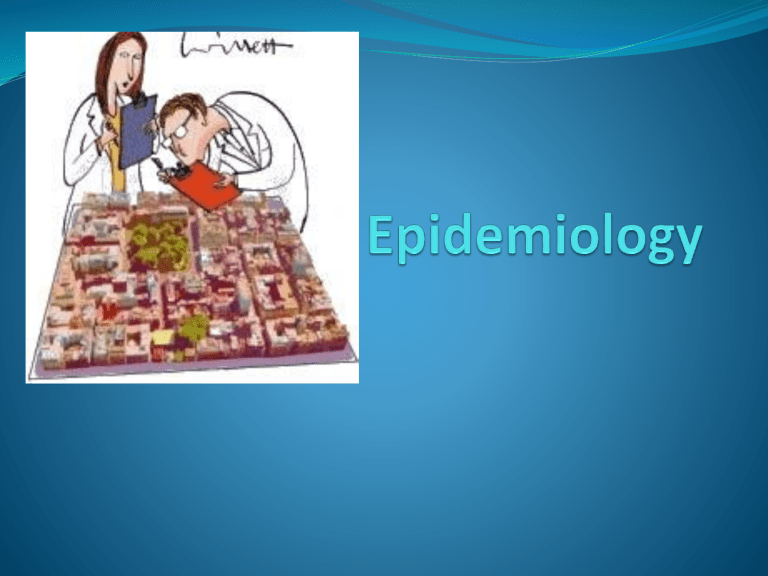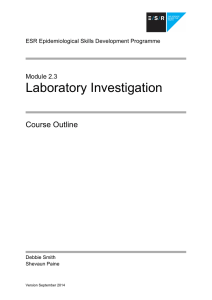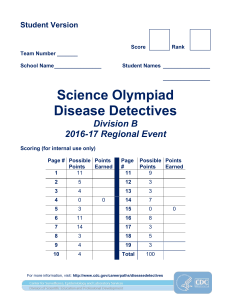Document 11689114

Purpose:
determine what factors are associated with diseases
(risk factors)
what factors may protect people or animals against disease (protective factors)
Now expanded to non-transmissible diseases
first developed to discover and understand possible causes of contagious diseases like smallpox, typhoid and polio among humans
Now expanded to nontransmissible diseases
Intro
never prove causation
that is, it cannot prove that a specific risk factor actually causes the disease being studied.
Ex: lung cancer/smoking
Epidemiological evidence can only show that this risk factor is associated (correlated) with a higher incidence of disease in the population exposed to that risk factor.
The higher the correlation the more certain the association, but it cannot prove the causation.
Descriptive Epidemiologic Clues
Person
Who is getting sick?
Place
Where is the sickness occurring?
Time
When is the sickness occurring?
Detectives in the Classroom: In the News
INTRODUCTION:
“Why are some people getting sick while others are remaining healthy?”
■ Why do some people develop asthma and others do not?
■ Why does AIDS occur more frequently in some places than others?
■ Why are more people overweight today than in the past?
Two types of studies
(a) whether the events have already happened
(retrospective)
Most common: case-control
Begins with outbreak b/c causes are unknown or unusual within population
(b) whether the events may happen in the future
(prospective).
strength of an epidemiological study depends on the number of cases and controls included in the study.
The more individual cases that are included in the study, the more likely it is that a significant association will be found between the disease and a risk factor.
Also important to know what behavioral, environmental, and health factors are involved
Establishing a link
statistics for establishing and quantifying the relationships between risk factors and disease, and for establishing whether or not there is an excessive amount of a particular disease occurring in a specific geographic area.
What types of data/resources are used?
medical records can provide invaluable historical data for establishing trends in the incidence of diseases.
Death certificates
investigate apparent "clusters" of disease in specific geographical areas
Greatest challenge of disease detectives….
Interpreting results
Patterns of Disease
Outbreak
Sudden outbreak or appearance in a local level
Epidemic
Increase in prevalence on a national scale
Pandemic
Increase prevalence on an international scale
Endemic
Disease present at Low levels of a popluation at any time








